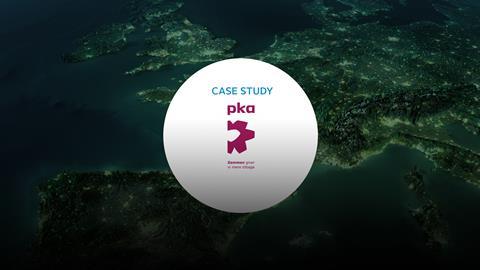| ORGANISATION DETAILS | |
|---|---|
| Name | PKA Pension Ltd |
| Signatory type | Institutional investor |
| Region of operation | Scandinavia |
| Assets under management | €44bn |
| COVERED IN THIS CASE STUDY | |
|---|---|
| Asset class | Green bonds |
| Sector | Mainly SSAs – sovereign states, supranational institutions and agencies |
| Geography | Global |
PKA believes the taxonomy is key in assisting investors to integrate real sustainability measures and green assets into their portfolios. This is crucial in achieving the goals of the Paris Agreement, as the taxonomy, together with the EU Green Bond framework (GBF), climate benchmarks and ESG disclosures, provide a clear framework for policymakers and market participants to transition their portfolios to carbon-neutral assets. A high degree of transparency is critical as investors need to be certain that proceeds from purchasing green bonds (GBs) are used in line with the specifications outlined in the prospectus. The taxonomy provides this transparency through its requirement for comprehensive reporting.
Taxonomy implementation
We created an internal GBF, based on the six principles in the EU Commissions Green Bond Framework, which guides ESG GBs due diligence. The due diligence process of a GB is based on cooperation between our ESG and credit departments and we only selected GBs that fulfil taxonomy criteria and adhere to the Do No Significant Harm (DNSH) principle.
Further, our GBF seeks to adhere to the UN Global Compact (UNGC) and ILO principles. We conducted ESG due diligence on a GB recommended by the credit department, based on our GBF and the bond’s prospectus. We invested in the bond if it was attractive from a risk/return perspective and satisfied the GBF.
Alignment results
The taxonomy provides a set of principles that we can use to evaluate the ‘greenness’ of assets: an external standard, based on the actual target of the investment, rather than policies, intentions or other potentially ambiguous factors. Since the spring of 2019, we have been using the taxonomy, and by extension the proposed EU green bond standard, as our guiding principle in ESG due diligence for investment in GBs. Therefore, most GBs we own bear the framework’s approval. For example, applying the GBF resulted in a GB investment from the Dutch Central Bank, the proceeds of which were used for climate adaptation and mitigation. This has given our stakeholders and members a clearer view of the activities that we fund through purchases of SSA GBs.
Challenges and solutions
| NO. | CHALLENGE | SOLUTION |
|---|---|---|
| 1 | Making the taxonomy applicable | Creation of an internal GBF |
| 2 | Identifying bonds that provide attractive returns and comply with the taxonomy | Collaboration between ESG and Credit departments leveraging the GBF |
Recommendations
It is critical to integrate the taxonomy into investment strategy by creating frameworks and guidelines to facilitate understanding of sustainable finance asset classes. Also, both asset managers and owners can benefit from systematically using the taxonomy to avoid greenwashing.












